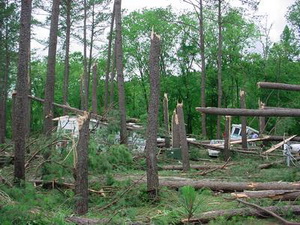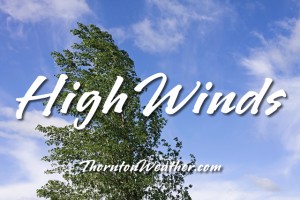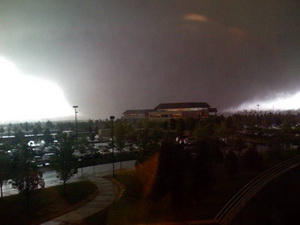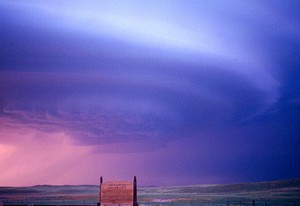
Over the past week we have highlighted some of the severe weather hazards that we face in Colorado every spring and summer in our Severe Weather 101 series. The dangers these present are significant and not to be taken lightly.
Tornadoes grab most of the headlines and certainly are a danger however others like lightning and flooding are more common and actually claim more lives. We ask all of our readers to please, take the time to review these important articles – they could save yours and your family’s lives!
The National Weather Service has published a nice wrap up of Severe Weather Awareness Week that covers all the basics – see it below. For more in depth information, please use the links at the bottom to view each article on our Severe Weather 101 series. Be safe and be weatherwise!
PUBLIC INFORMATION STATEMENT
NATIONAL WEATHER SERVICE GRAND JUNCTION CO
600 AM MDT SAT APR 16 2022
SEVERE WEATHER AWARENESS WEEK IN REVIEW
Severe Weather Awareness Week in review…
Severe Weather Awareness Week in Colorado concludes today. During the past week we have presented information and safety rules for tornadoes, lightning and wildfires, floods and flash floods, straight-line thunderstorm winds, hail, and our warning programs.
We will now review some of the most important safety rules in our effort to build a Weather-Ready Nation.
Be weather-wise by staying informed on expected weather in your area. The National Weather Service is typically aware of the potential for severe weather many hours or even days before any severe weather watches or warnings are issued, providing forecast products to heighten your awareness. A Weather Story product is posted each day on National Weather Service Internet pages and Facebook pages which includes a map and text on possible hazardous weather expected within the next seven days.
A Hazardous Weather Outlook is also issued daily with information on possible hazardous weather through the next seven days. A watch is issued when conditions for severe weather or flooding become possible. A warning is then issued when life threatening conditions are imminent or occurring.
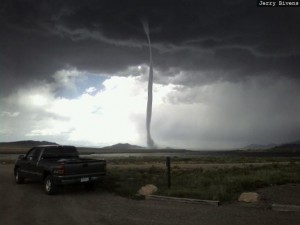
The best way to protect yourself from tornadoes is to have a plan of action. The safest place to be if a tornado approaches is in a basement or safe room within a well-built structure, or in an underground storm shelter. If none of these options are available, move to a hallway or a small interior room on the lowest floor, usually this is a closet or bathroom. Get under a heavy piece of furniture or in a bath tub and cover yourself with blankets. Remember, the greatest risk of injury from tornadoes is from flying debris.
Modular homes and mobile homes, even those tied down, offer little protection from tornadoes. If a tornado approaches, leave those locations and seek safety in a nearby sturdy building or storm shelter.
If you are driving in open country and see a tornado, if time permits, the best thing to do is simply drive away from the tornado path. Do not take shelter beneath a highway overpass. Wind speeds may actually be higher in these areas and often become collection points for debris.
If you are caught outside and cannot seek shelter inside a sturdy structure, crawl into a culvert or lie down in a narrow ditch or ravine and cover your head. But remember that the worst place to be when a tornado threatens is outside in the midst of flying debris.
Lightning usually kills and injures more people in Colorado than any other thunderstorm hazard. Lightning also causes many wildfires.
The best defense to protect yourself against a lightning strike is to plan ahead and avoid being caught where you might be vulnerable. Check weather forecasts prior to venturing out, especially if you are heading into the mountains. Plan outdoor activities early in the day before storms develop.
If thunderstorms threaten, seek shelter in a building or in an enclosed metal-roof vehicle, making sure all windows and doors are closed. Never seek shelter under an isolated tree. During thunderstorms, stay off corded telephones, away from electrical devices, and away from plumbing. Also get out of shower stalls, bath tubs, swimming pools and lakes when lightning is nearby.
You should wait at least 30 minutes after the last sound of thunder before resuming outdoor activities. When thunder roars…go indoors.
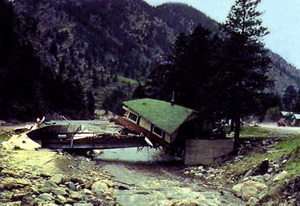
When flooding or flash flooding is possible, you should remain alert and be ready to quickly evacuate to higher ground or climb to safety. Flash floods often occur suddenly and without warning. You need to follow some basic flood safety rules:
- Do not camp or park your vehicle along streams and washes, particularly during threatening conditions.
- If you are near a river, be aware of water levels and be prepared to move to higher ground if river levels rise.
- Do not enter areas that are already flooded.
- If walking or fishing along a river, be aware that erosion from swift running water can cause river banks to collapse.
- Never let your children play around high water, storm drains, viaducts or arroyos.
At least half of all flash flood fatalities are vehicle related. While driving your automobile, look out for flooding at highway dips, bridges and low areas. Two feet of moving water will carry away most vehicles. Never attempt to drive across a flooded road. And be especially cautious at night when it is difficult to see flood dangers.
Straight-line winds from thunderstorms, including microbursts, can become quite strong, even reaching speeds in excess of 100 mph in extreme cases. When thunderstorms approach, high winds can suddenly develop, causing things on the ground to become swift moving airborne missiles with a potential force to injure or kill. As with any thunderstorm, seek shelter before the storm arrives.
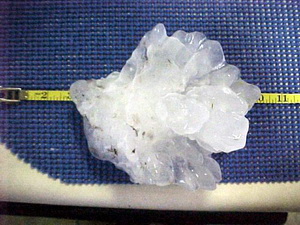
Large hail can pose a danger to animals and people. Hail also produces considerable damage to crops and personal property each year in Colorado. Again, get indoors before thunderstorms arrive. A fall of small hail can suddenly change to a fall of very large ice missiles which can injure or kill. Make efforts to protect personal property before storms threaten.
When thunderstorms threaten, tune to NOAA All-Hazards Weather Radio, The Weather Channel, or your local radio or television stations. Also check the Internet web site from the National Weather Service office serving your area. And if you have a relatively new cell phone you should receive Tornado and Flash Flood Warnings on your phone if you are in the area of the warning.
During threatening weather days, plan the actions you will need to take so that you will be prepared if dangerous weather conditions actually develop.
NOAA’s National Weather Service wishes you a safe severe weather season.
Severe Weather Awareness Week in Colorado concludes today. During the past week we have presented information and safety rules for tornadoes, lightning and wildfires, floods and flash floods, straight-line thunderstorm winds, hail, and our warning programs.
This is a recap of a five part series on Colorado’s severe weather.

